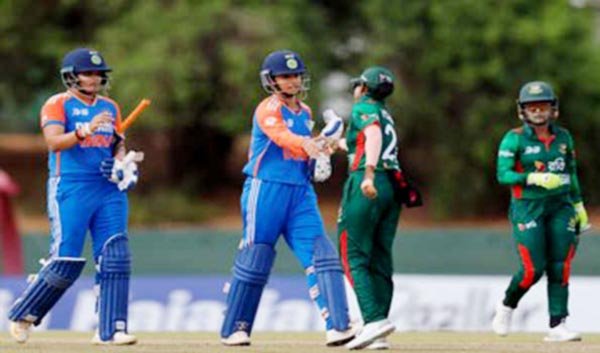Chennai, June 10 (UNI) In a significant breakthrough, the Aditya-L1 satellite, India’s first mission to explore the hottest planet Sun, has captured the solar fury.
ISRO on Monday said the eruptive events were captured by two remote sensing instruments onboard Aditya-L1, viz. the Solar Ultra Violet Imaging Telescope (SUIT) and the Visible Emission Line Coronagraph (VELC) last month.
In a social media post, it said “Aditya-L1 Mission: SUIT and VELC instruments have captured the dynamic activities of the Sun during May 2024”.
“Several X-class and M-class flares, associated with coronal mass ejections, leading to significant geomagnetic storms were recorded”, it added.
SUIT was aims to study the Sun’s ultraviolet (UV) emissions and capture high-resolution images of the Sun’s atmosphere, known as the corona, in various UV wavelengths.
VELC is the largest payload flown on the Aditya-L1 mission. It is an internally occulted solar coronagraph capable of simultaneous imaging, spectroscopy and spectro-polarimetry close to the solar limb.
The Active region AR13664 on the Sun, during its passage during the week of May 8-15, 2024, erupted several X-class and M-class flares, which were associated with Coronal Mass Ejections (CMEs) during May 8 and 9.
These produced a major geomagnetic storm on May 11, 2024.
“Two of the remote sensing payloads on board Aditya-L1 (SoLEXS and HEL1OS) captured these events during May 8-9, 2024 while the two in-situ payloads (ASPEX and MAG) captured this event during May 10-11, 2024 during its passage through L1. These observations were subsequently reported by ISRO, along with the observations made by the Chandrayaan-2 spacecraft, XPoSat as well as by USO-PRL ground-based facility”, the Space agency said.
“During those series of eruptive events, two remote sensing instruments onboard Aditya-L1, viz. the Solar Ultra Violet Imaging Telescope (SUIT) and the Visible Emission Line Coronagraph (VELC) were in baking and calibration modes respectively, and couldn’t observe the event during May 10- 11. Both SUIT and VELC doors were opened on May 14 after the completion of the indented operations”, it said.
It also shared the images of the SUIT observations–the Sun images acquired by the SUIT payload on May 17, 2024.
On the VELC observations, it said VELC also carried out observations in one of the spectroscopic channels for the emission line 5303 Angstrom. Raster scans of the solar corona were carried out on May 14, 2024, to capture the coronal activities in this particular spectral line.
The raster scan image at this wavelength is raster image, which was created by assembling the wavelength-averaged slit images as the Sun is rastered on the slit of the spectrograph.
The duration of the raster is about 20 minutes and used four slits covering different regions of the solar corona simultaneously.
Citing the images, ISRO said the yellow ‘open’ circle in the image indicates the edge of the solar photosphere (i.e. the ‘visible’ disk of the Sun). The black ‘filled’ circle indicates the extent of the occulting disk used in the VELC to block the bright light of the solar photosphere so that the relatively million times faint structures in the solar corona could be observed.











